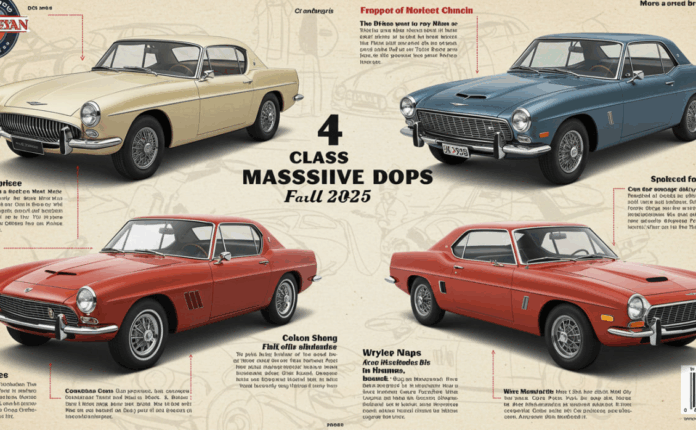On July 27, 2025, the Indianapolis Motor Speedway witnessed a historic moment as Bubba Wallace crossed the finish line to claim victory in the Brickyard 400, securing his spot in the NASCAR Cup Series playoffs. This triumph wasn’t just another race win—it was a career-defining moment for the 31-year-old driver, marking his first crown jewel victory and ending a 100-race winless streak. Wallace’s performance under pressure, navigating rain delays, fuel concerns, and a fierce battle with defending champion Kyle Larson, showcased his skill and determination. For fans and tech enthusiasts alike, this race highlighted the intricate blend of driver talent, team strategy, and automotive engineering that makes NASCAR a thrilling spectacle. Let’s dive into the details of Wallace’s monumental win, explore the technology behind his 23XI Racing Toyota, and review what this means for his playoff journey.
The Race: A Heart-Pounding Showdown at Indy
A Battle Against the Elements and the Odds
The 2025 Brickyard 400 was anything but predictable. With 160 laps scheduled on the iconic 2.5-mile oval, the race was extended by two overtime restarts, pushing drivers and their machines to the limit. A sudden rain shower with just six laps remaining brought out a red flag, halting the race for nearly 18 minutes. Wallace, leading at the time, faced a nerve-wracking wait on pit road, communicating with his spotter, Freddie Kraft, to maintain focus. “Freddie, you still up there?” Wallace asked, to which Kraft replied, “I haven’t jumped yet,” providing a moment of levity amidst the tension. This pause tested Wallace’s mental fortitude as he strategized for the restarts, knowing his fuel tank was dangerously low.
Outdueling Kyle Larson
When the race resumed, Wallace faced a formidable challenge from Kyle Larson, the 2024 Brickyard 400 winner and one of NASCAR’s top drivers. Larson, driving for Hendrick Motorsports, closed a five-second gap to just three seconds before the rain delay. On the first overtime restart, Wallace held the inside lane, pulling ahead through Turns 1 and 2. A multi-car crash triggered a second overtime, raising concerns about whether Wallace’s No. 23 Toyota had enough fuel to finish. Against the odds, Wallace executed a flawless restart, holding off Larson by a mere 0.222 seconds to claim the checkered flag. This victory not only showcased Wallace’s driving prowess but also highlighted the precision of his team’s fuel strategy, a testament to the technological advancements in NASCAR engineering.
The Technology Behind the Win
The 23XI Racing Toyota Camry XSE
Wallace’s victory was powered by the No. 23 Toyota Camry XSE, fielded by 23XI Racing, co-owned by NBA legend Michael Jordan and NASCAR veteran Denny Hamlin. The Toyota Camry XSE is a marvel of modern motorsport engineering, designed to balance speed, durability, and fuel efficiency. Equipped with a 670-horsepower V8 engine, the car is built to withstand the grueling demands of a 400-mile race while maintaining competitive lap times. The 2025 model features advanced aerodynamics, with a low-drag body and adjustable spoilers that optimize downforce for high-speed tracks like Indianapolis. Wallace’s ability to stretch his fuel through two overtime restarts underscores the car’s sophisticated fuel management system, which relies on real-time data to monitor consumption and performance.
Team Strategy and Data-Driven Decisions

NASCAR is as much about strategy as it is about speed, and 23XI Racing’s crew chief, Charles Denike, played a pivotal role in Wallace’s success. The team’s decision to stay on the track during the final restarts, despite low fuel, was a calculated risk informed by data from the car’s onboard telemetry systems. These systems provide real-time feedback on fuel levels, tire wear, and engine performance, allowing the crew to make split-second decisions. The integration of advanced analytics in NASCAR has revolutionized how teams approach races, and Wallace’s win demonstrated the importance of harmonizing driver skill with cutting-edge technology. The team’s ability to conserve fuel while maintaining a lead under pressure highlights the synergy between human intuition and machine precision.
Impact on the NASCAR Playoff Picture
Securing a Playoff Berth
Wallace’s Brickyard 400 victory was a game-changer for his 2025 season. Entering the race, he was ranked 16th in the playoff standings, just 16 points above the cutline. The win locked in his spot in the 16-driver postseason field, relieving the pressure of points racing with four regular-season events remaining. This marks Wallace’s second playoff appearance in his eight-year Cup Series career, following his 2023 qualification. The victory also bolstered 23XI Racing’s momentum, positioning the team for a strong playoff run alongside teammate Tyler Reddick, who is likely to qualify on points.
A Historic Milestone
Beyond the playoff implications, Wallace’s win was a historic moment for NASCAR. As the first Black driver to win a major race on Indianapolis Motor Speedway’s 2.5-mile oval, Wallace etched his name alongside legends like Jeff Gordon and Dale Earnhardt. His triumph adds to his legacy as a trailblazer, following his 2021 Talladega win, which made him the second Black driver to win at the Cup level after Wendell Scott in 1963. The Brickyard victory, one of NASCAR’s four crown jewel events, elevates Wallace’s status and underscores the sport’s growing inclusivity, a narrative that resonates with fans and sponsors alike.
Why This Win Matters
A Career-Defining Moment
For Wallace, the Brickyard 400 win was more than just a trophy—it was a redemption arc. After a 100-race winless streak since his 2022 Kansas victory, Wallace faced doubts about his ability to compete at the highest level. His candid post-race comments revealed the mental toll of that drought, as he battled self-doubt in the race’s final laps. “I kept telling myself, ‘I’m not going to be able to do it,’” he admitted. Yet, with the support of his team, new crew chief Charles Denike, and personal milestones like becoming a father, Wallace found the resilience to persevere. This victory, celebrated with his wife Amanda and 10-month-old son Becks, is a testament to his growth as a driver and a person.
Implications for 23XI Racing
The win also carries weight for 23XI Racing amid its ongoing antitrust lawsuit against NASCAR over charter status. Despite running as an “open” team after losing its charter, Wallace’s victory ensures the team’s competitive relevance and financial stability. The estimated $884,000 to $1.1 million payout from the $11 million purse provides a significant boost, though charter teams typically receive larger shares. The triumph also strengthens 23XI’s brand, aligning with Michael Jordan’s legacy of excellence and Denny Hamlin’s strategic vision. As the team prepares for the playoffs, this win signals their potential to challenge established powerhouses like Hendrick Motorsports and Joe Gibbs Racing.
Looking Ahead: Wallace’s Playoff Prospects

With his playoff spot secured, Wallace can approach the final four regular-season races—Iowa, Richmond, Michigan, and Daytona—with confidence. His performance at Indianapolis, where he led 30 laps and demonstrated mastery of restarts, suggests he’s peaking at the right time. The playoffs, beginning on Labor Day weekend, will test Wallace’s consistency across diverse tracks, from short ovals to road courses. If 23XI Racing can maintain its strategic edge and Toyota’s engineering prowess, Wallace could make a deep run, potentially contending for a top-eight spot in the postseason. For fans, his journey will be one to watch, blending raw talent with the emotional narrative of overcoming adversity.
FAQ
What is the Brickyard 400?
The Brickyard 400 is one of NASCAR’s four crown jewel events, held annually at Indianapolis Motor Speedway. The 400-mile race, covering 160 laps on a 2.5-mile oval, is renowned for its prestige and challenging conditions, attracting top drivers and massive crowds.
How did Bubba Wallace win the 2025 Brickyard 400?
Wallace won by leading 30 laps, including the final 17, and holding off Kyle Larson in two overtime restarts. Despite a rain delay and fuel concerns, his strategic decision to stay on the track and flawless restarts secured the victory by 0.222 seconds.
Why is this win significant for Bubba Wallace?
This victory marked Wallace’s first crown jewel win, ended a 100-race winless streak, and made him the first Black driver to win a major race at Indianapolis Motor Speedway’s oval. It also clinched his 2025 NASCAR Cup Series playoff spot.
What technology helped Wallace’s performance?
The No. 23 Toyota Camry XSE’s 670-horsepower V8 engine, advanced aerodynamics, and real-time telemetry systems were crucial. These allowed precise fuel management and strategic decisions, enabling Wallace to stretch his fuel through overtime restarts.
How does this affect 23XI Racing’s season?
The win boosts 23XI Racing’s momentum, financial stability, and playoff prospects. Despite legal challenges with NASCAR, the victory highlights the team’s competitiveness and positions them for a strong postseason with drivers Wallace and Tyler Reddick.



